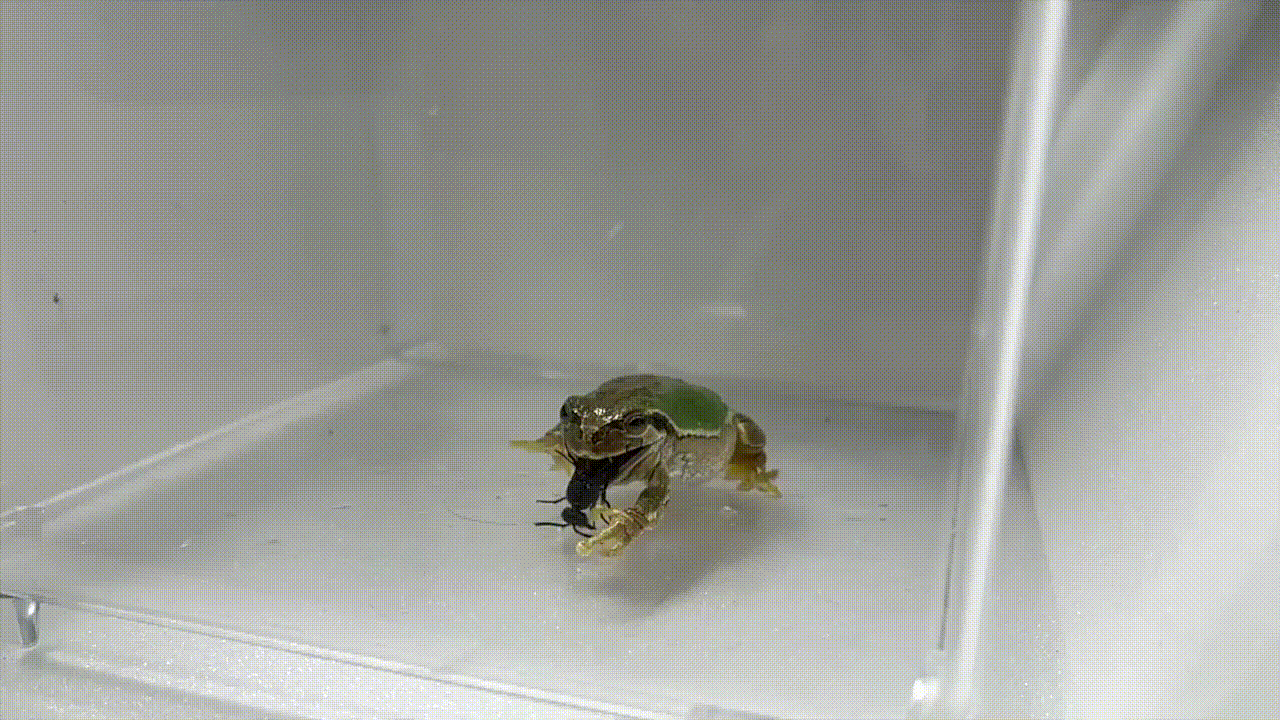These Wasps Can Fight Predators With Their Spiky Genitalia
The insects jabbed their spines at hungry frogs in a similar way to how females sting

When a female mason wasp feels threatened, she jabs her stinger at an attacker, injecting it with a potent venom so she can make her escape. Male wasps lack this defense, because stingers evolved from a female egg-laying organ called an ovipositor.
But male wasps of certain species have a pair of sharp spikes on their genitalia that researchers suspected may be used to ward off predators.
Now, in a new study published Monday in Current Biology, scientists at Kobe University in Japan tested this hypothesis with male mason wasps. They placed each insect in an enclosure with a frog and filmed their interactions. The researchers found that when frogs tried to gobble up the male insects, the wasps stabbed at them with their spines in a similar way to how females would sting.
“We showed that male genitalia function as an antipredator defense,” Shinji Sugiura, an ecologist and co-author of the new paper, tells the New York Times’ Sofia Quaglia in an email. “I was very excited to know that male wasps as well as female ones are able to ‘sting,’ because I had believed that male wasps never counterattack.”
However, these counterattacks weren’t always successful: All 17 tree frogs opened their mouths in an attempt to swallow their prey, and about 65 percent of them managed to devour the wasps, despite the pseudo-stings. Still, 35.3 percent of the tree frogs gave up, allowing the wasps to escape their doom.
In comparison, female wasps were much more likely to get away, achieving an 87.5 percent survival rate.
Researchers also experimented with male wasps that had their genitals removed. While the genital-less wasps tried to bite their tree frog assailants, all 17 were devoured. “Therefore, genital spines of male genitalia appear to play a role in preventing tree frogs from swallowing male wasps,” the researchers write in the study.
Justin O. Schmidt, a scientist at the University of Arizona and author of The Sting of the Wild, tells the Times the new research confirms what scientists have experienced with mason wasps in the field—that the males try to sting. Male wasps evolved to act like females to appear more intimidating to predators.
“Of course, he can’t sting, but he’s trying to fake you out … so you look at it and say, ‘Oh, wow, this is a female, bad news,’” Schmidt, who was not involved in the study, tells the Times. “I think it’s a form of startle as much as an absolute defense.”
The team also looked at the insects’ interactions with a species of pond frog. All frogs of this species successfully attacked and ate the mason wasps, regardless of whether they were male or female. “Pond frogs may have a high sting tolerance,” Sugiura tells Live Science’s Nicoletta Lanese in an email. “A previous study reported that a pond frog could eat even a venomous hornet.”
The researchers say in a statement that the males’ spines are likely used for defense in several wasp species. However, few studies have examined this role of male genitalia.
“I think we’re going to see more cases like that,” Akito Y. Kawahara, an insect curator at the Florida Museum of Natural History who was not involved in the study, tells the Times. “It’s just the beginning.”
/https://tf-cmsv2-smithsonianmag-media.s3.amazonaws.com/accounts/headshot/MargaretOsborne.png)
/https://tf-cmsv2-smithsonianmag-media.s3.amazonaws.com/accounts/headshot/MargaretOsborne.png)